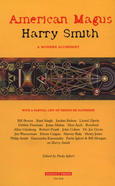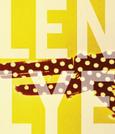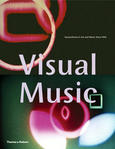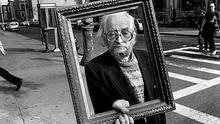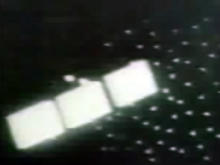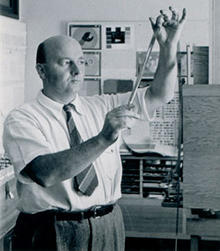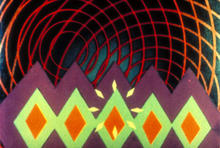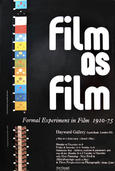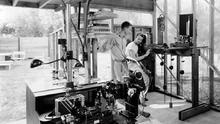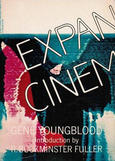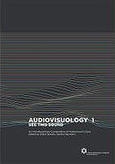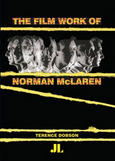No. 5: Circular Tensions
(1950)- Homage to Oskar Fischinger by Harry Smith bombards the viewer with a number of alternating colour transitions used in conjunction with shapes that emerge from deep screen space.
If No. 4 is vaguely reminiscent of Fischinger, No. 5 (ca. 1950) is more directly related to the great animator's work and this is made explicit in its sub-title, Homage to Oskar Fischinger.
An extension of No. 4, No. 5 expands that film's two-coloured format. It begins with a static red triangle, then a green square, and then a red circle. It is as though we are being introduced to the protagonists of the film: simple, static shapes out of which complexity and rhythmic interaction will be produced. The film is very much in line with the movements of No. 4, but with the addition of concentric circles, occasionally visible through the coloured shapes, as well as circles dancing around within (and bumping into) other circles. No. 7 (ca. 1950–51) again features nods to Fischinger, in particular through a more sustained use of concentric moving circles as well as the motif of shapes composed of small triangles, which seem to explode outwards with projectile force. These motifs directly refer to Fischinger's Allegretto (1936) and create a sense of hypnotic absorption.
The film also bombards the viewer with a number of alternating colour transitions used in conjunction with shapes that emerge from deep screen space. In addition to using moving circles and circular patterns, Harry Smith again makes use of grille patterns at times within the film. The pace of movements and colour alternations intensify at various moments, as though attempting to overwhelm the viewer's sensorial apparatus.
Source: Senses of Cinema
